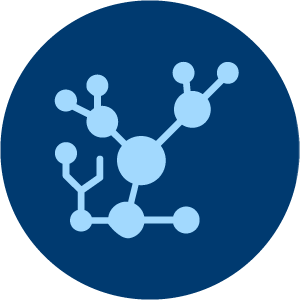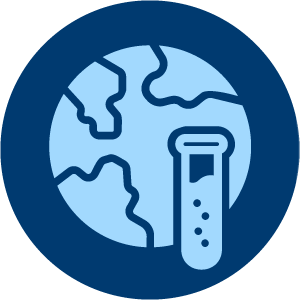Leave behind 2 p new Kidney diets
Revolutionerande njurdieter för våra lurviga vänner
Nya SPECIFIC (Heart &) Kidney Support Hydrolysed och uppdaterade SPECIFIC (Heart &) Kidney Support är multifunktionella njurdieter som stöder ”gut-kidney axis” och djurets välmående samt kan bidra till att bromsa njursjukdom och därmed öka livslängden. Dieterna har alla de basala egenskaperna hos en njurdiet, MEN de har också ett unikt paket av andra egenskaper som stöder njurfunktionen.

- Hydrolyserade proteiner - hög smältbarhet och hypoallergent (FKD-HY, FKW-HY, CKD-HY, CKW-HY)
- Unikt höga nivåer av omega-3-fettsyrorna EPA och DHA
- AuraGuard och gynnsamma fibrer – stöder en intakt tarmslemhinna och främjar en frisk tarm
- Zeolit – hjälper till att minska bildandet av toxisk urea
- Kontrollerade nivåer av protein, fosfor och natrium

Kronisk njursjukdom och betydelsen av rätt kost
Kronisk njursjukdom (CKD) är vanligt förekommande, särskilt hos äldre katter och hundar. Det är en livslång, progressiv och irreversibel sjukdom som påverkar njurarnas förmåga att filtrera avfallsprodukter och upprätthålla elektrolyt- och vätskebalansen.
Nutrition är en viktig del av behandlingen av CKD hos hundar och katter för att bromsa utvecklingen av njursvikt, förbättra livskvaliteten och minska risken för sekundära komplikationer. Genom att välja bästa möjliga kost kan du förlänga livslängden för din lurviga patient och se till att de är vitala i varje skede av livet.
Lär dig vad som händer med njurarna under sjukdomens förlopp med den interaktiva 4D Kidney Model Klicka här
Stödmaterial för nedladdning
WHITE PAPER - Chronic Kidney Disease (CKD) in dogs and cats and the impact of nutrition
Material för veterinärer och sköterskor add
Djurägarmaterial add
Material för sociala medier add
Rätt kost för hantering av CKD hos katter och hundar
Målen för hantering av CKD hos katter och hundarmed hjälp av kosten är:
- Att minska eller förbättra kliniska tecken
- Att bromsa försämringen av njurfunktionen och förlänga djurets liv
- Att minska obalanser i elektrolyt-, kalcium-, fosfor och syra-basbalans
- Att tillhandahålla korrekt sammansatt kost
I foderlagstiftningen (R 2020/354) regleras de obligatoriska egenskaperna för foder som har “claims” att främja njurfunktionen vid kronisk njurinsufficiens. Det är endast maxvärden för fosfor (≤5 g/kg för hund / ≤6,5 g/kg för katt) och protein (≤220 g/kg för hund / ≤320 g/kg för katt) som anges för en komplett njurdiet med 12 % vattenhalt.
Vetenskapen visar dock att det finns ytterligare faktorer relaterat till kosten som kan gynna CKD patienter, speciellt faktorer som stödjer tarmhälsan.

add
Patients with CKD have a reduced capacity to excrete phosphorus, which successively leads to hyperphosphatemia, secondary hyperparathyroidism, precipitation of calcium phosphate in the kidneys, loss of nephrons, progression of renal failure and shorter survival time. Studies on phosphorus restriction in cats and dogs showed reduced plasma phosphorus, parathyroid hormone (PTH) levels, kidney mineralisation, fibrosis and inflammation,29 enhanced survival time and maintenance of kidney function.12,16
Watch our video and learn more about phosphorus restriction and CKD.
If plasma phosphorus concentrations of cats or dogs with CKD remain too high on a phosphorus restricted diet, phosphorus binders can be used to limit intestinal absorption.42,43 CatneyOne from Dechra is a lanthanum carbonate phosphorus binder. Read more about CatneyOne.

add
Excretion of waste products from protein metabolism (urea, creatinine, uremic toxins indoxyl sulphate (IS) and para-cresyl sulphate (pCS)) is compromised in CKD, leading to a build-up of toxins in the body and increased blood levels, which can cause nausea, vomiting, inappetence and reduced food intake, as well as disease progression in cats and dogs with CKD.
Older studies showed that dietary protein restriction decreases levels of waste products like urea and creatinine and reduces proteinuria and glomerular damage.1 More recent studies show that dietary protein restriction decreases blood levels of IS and pCS from undigested proteins in healthy dogs and cats,14,33 as well as in cats with early CKD.15
With a protein restricted diet, the protein needs to have a high biological value and be highly digestible.
Watch our video and learn more about protein restriction and CKD.

add
Balanced potassium levels are important to decrease the risk of hypokalaemia frequently found in cats with CKD11 and hyperkalaemia, which is more common in dogs.31
Ytterligare anpassningar av kosten som kan stödja hanteringen av kronisk njursjukdom add
- Kost med hög smältbarhet, högt energiinnehåll och hög smaklighet
- Höga halter av omega-3-fettsyrorna EPA och DHA, som finns i fiskolja6,28
- Tarmstödjande ingredienser (polyfenoler, pre-, pro- och postbiotika) för att stödja mikrobiomet3,18
- Tillsatt zeolit för att binda ammonium i tarmen25
- Minskad risk för metabolisk acidos genom tillsats av en alkaliserande ingrediens
- Minskning av natriumhalten för att hjälpa till vid högt blodtryck
- Tillsats av antioxidanter för att minska oxidativ stress8
För att säkerställa tillräcklig vätsketillförsel är regelbunden övervakning av biokemiska markörer och bedömningar av kroppstillståndet viktiga för att stödja dessa patienter och förbättra deras livskvalitet. Titta på vår video och lär dig mer om BCS hos katter. Klicka här
"Gut-kidney axis"
Den så kallade ”gut-kidney axis” är ett dubbelriktat och självförstärkande förhållande mellan tarm och njurar, där njursjukdom kan orsaka dysbios i tarmen, som sedan påverkar njurfunktionen negativt, vilket i sin tur förstärker dysbiosen. I tarmen utvecklas inflammation, läckande tarm (ökad genomsläpplighet) och dysbios.10,32 Det är oklart om dysbios eller läckande tarm är en orsak till eller ett resultat av CKD.
Se vår video och lär dig mer om "gut-kidney axis"
De olika delarna i "gut-kidney axis"
Dysbiosis och mikrobiomet add
Dysbios är när jämvikten mellan mikrobiota, tarmslemhinnans epitelbarriär och immunförsvar rubbas, med minskad mångfald, färre nyttiga sackarolytiska bakterier och fler patogena bakterier. Dysbios kan orsakas av osmält föda, förändringar i kosten, ökad mängd uremiska toxiner, användning av antibiotika etc. Dysbios kan leda till dysreglering av metaboliska processer, hjärt-kärlsjukdom, försämrad tarmbarriär (läckande tarm), systemisk inflammation och ökad mängd uremiska toxiner, vilket kan öka hastigheten av progressionen av CKD hos människor, hundar och katter.21,35
Se vår video för att lära dig mer om dysbios.
Läckande tarm add
Vid läckande tarm kan skadliga molekyler passera mellan epitelcellerna och in i blodomloppet. Det är särskilt viktigt för utvecklingen av CKD eftersom endotoxiner, som bakteriella lipopolysackarider (LPS) och uremiska toxinprekursorer, kan stimulera och öka systemisk inflammation och oxidativ stress.3,34 Det finns ett samband mellan ökad permeabilitet i tarmen och CKD.
Titta på vår video och lär dig mer om läckande tarm.
Uremiska toxiner add
Uremiska toxiner är en del av den självförstärkande processen i "gut-kidney axis" hos hundar och katter med CKD. IS och pCS ansamlas i blodet på grund av minskad utsöndring i njurarna samt ökad produktion av prekursorer från dysbios och osmält protein i tjocktarmen. Detta påverkar och minskar produktionen av nyttiga kortkedjiga fettsyror (SCFA), ökar risken för läckande tarm och gynnar bakterier som producerar uremiskt toxin, vilket bidrar till sjukdomsprogression med direkta nefrotoxiska effekter och ökad risk för hjärtsjukdom.22
Titta på vår video och lär dig mer om uremiska toxiner i "gut kidney axis".
Hur rätt kost vid CKD hos hundar och katter kan stödja "gut-kidney axis"
Rätt kost spelar en viktig roll i de processer som är relaterade till "gut-kidney axis", för att minska risken för tarmdysbios och läckande tarm, för att bromsa utvecklingen av njursvikt och för att bidra till att upprätthålla näringsmässig status och livskvalitet.
Titta på vår video och lär dig mer om hur rätt kost hjälper katter och hundar med CKD

add
Foder med hög smältbarhet, högt energiinnehåll och hög smaklighet
Det är viktigt att njurfoder för hundar och katter med CKD är mycket lättsmälta, energirika och välsmakande för att tillgodose näringsbehovet och minska mängden metabola restprodukter, samt minska produktionen av uremiska toxiner och inflammatoriska mediatorer. Det möjliggör också maximal absorption av essentiella näringsämnen (proteiner, fetter, kolhydrater, vitaminer och mineraler) och kalorier (även vid minskad konsumtion), och det bidrar till att minska anorexi, undernäring, viktminskning och muskelnedbrytning, vilket är vanligt hos patienter med CKD.
Titta på vår video och lär dig mer om hur optimal kost kan hjälpa till med CKD.
Ibland kan medicinering behövas för att stimulera aptiten och hjälpa till med anorexi.
Läs mer om viktnedgång hos katter och hur man hanterar det

add
Protein med hög smältbarhet – fördelar med hydrolyserade proteinkällor för CKD-patienter
Protein med hög kvalitet
Inte bara nivån utan också kvaliteten på proteinet (hög smältbarhet och optimal aminosyraprofil) är av betydelse för att stödja "gut-kidney axis", särskilt eftersom njurpatienter behöver en reducerad mängd protein under resten av livet, samtidigt som de ofta kämpar med nedsatt upptag av protein.4 Katter som utfodrades med en njurdiet berikad med essentiella aminosyror behöll sin kroppsmassa bättre än katter som fick en vanlig njurdiet.19
Protein med hög smältbarhet
Användning av protein med hög smältbarhet kan bidra till att minska mängden osmält protein i tjocktarmen, vilket i sin tur minskar den mikrobiella produktionen av uremiska toxinprekursorer36 och deras omvandling till uremiska toxiner i levern.22,35 Detta kommer att minska risken för dysbios, sänka plasmanivåerna av urea och uremiska toxiner och bidra till att bromsa utvecklingen av CKD.32,36
Hydrolyserade proteinwe
Hydrolyserade proteiner kan vara en högkvalitativ och mycket lättsmält proteinkälla för njurfoder. Hydrolyering delar upp intakta proteiner i mindre peptider, vilket gör dem "försmälta", vilket möjliggör en mer fullständig metabolisering i tunntarmen och leder till mindre osmält protein i tjocktarmen. Studier på hundar har visat högre absorption från hydrolyserat protein och mindre avfallsprodukter jämfört med intakt protein.27,38 Hydrolysering av proteiner kan också minska deras allergiframkallande potential.
Se vår video och lär dig mer om hur hydrolyserat protein kan vara till hjälp vid CKD.

add
Tarmstödjande ingredienser för att främja "gut-kidney axis"
Pre-, pro- och postbiotika samt lösliga fibrer
Ökat intag av prebiotika (nyttiga fermenterbara fibrer), probiotika (levande nyttiga bakterier) eller postbiotika (fermenterad produkt med döda mikroorganismer, cellfragment och nyttiga metaboliter som SCFA) kan bidra till att återställa en balanserad och hälsosam mikrobiota, stärka tarmbarriären och minska produktionen av metaboliska uremiska toxiner, minska tarmpermeabiliteten och systemisk inflammation, och kan vara en viktig del av hanteringen av CKD.23,35,37
Se vår video och lär dig mer om hur prebiotiska/fermenterbara fibrer kan hjälpa till vid CKD.
Naturliga polyfenoler
Naturliga polyfenoler (AuraGuard) kan bidra till ökad integritet i tarmbarriären. De kan förbättra tight junction-funktionen genom att öka produktionen av SCFA och minska produktionen av proinflammatoriska cytokiner.3
Se vår video och lär dig mer om hur AuraGuard kan hjälpa vid CKD.
Zeolit
Zeolit i kosten kan binda ammonium i tarmen, vilket minskar mängden tillgängligt ammonium i tarmen som kan tas upp i blodet. Detta leder till minskad metabolisering till urea och minskar belastningen på njurarna genom minskat behov av utsöndring.26
Se vår video och lär dig mer om hur zeolit kan hjälpa vid CKD.
Omega-3-fettsyror
Nya rön visar att omega-3-fettsyror kan påverka tarmmikrobiomet genom att påverka nivåerna av proinflammatoriska mediatorer eller nivåerna av SCFA och ha en gynnsam effekt på CKD genom att ha effekt på "gut-kidney axis".17,20
Se vår video och lär dig mer om hur omega-3 kan hjälpa vid CKD.
Dechra Academy erbjuder en rad olika onlinekurser, bland annat denna kurs om njursjukdom
Kostens betydelse vid hantering av njursjukdom
Denna utbildning behandlar kostens roll som en del av ett multimodalt tillvägagångssätt för hantering av kronisk njursjukdom hos hundar och katter, i synnerhet värdet av en kost med hög smältbarhet och hydrolyserat protein samt vikten av höga nivåer av antiinflammatoriska omega-3- och -6-fettsyror.
Registrera dig i Dechra Academy
Har du redan registrerat dig för Dechra Academy? - gå direkt till kursen:
Öppna modulen om hantering av Njursjukdom

Fördelar med omega-3 EPA och DHA vid CKD hos hundar och katter
Det är välkänt att höga halter av omega-3-fettsyrorna EPA och DHA i kosten kan bidra till att modulera systemisk inflammation och njurinflammation, ha gynnsamma effekter på hjärt- och kärlhälsa och njurfunktionen samt minska risken för förlust av muskelmassa och kakexi.
Betydelsen av EPA och DHA omega-3 i progressionen av CKD add
EPA och DHA omega-3 kan bidra till att bromsa utvecklingen av CKD på flera sätt
- Minskar inflammation och oxidativ stress genom att påverka produktionen av proinflammatoriska eikosanoider
- Syntetiserar metaboliterna resolviner och protektiner, potenta antiinflammatoriska mediatorer som blockerar verkan av proinflammatoriska eikosanoider och hjälper till att rensa inflammationsområdet30
- Öka biotillgängligheten av kärlvidgande kväveoxid, som kan sänka det systemiska och intraglomerulära blodtrycket och minska proteinuri6
- Minska risken för trombos och hämma produktionen av pro-fibrotiska tillväxtfaktorer, t.ex. TGF-β13 som bromsar utvecklingen av njurfibros
- Stödja tarmfloran och immunförsvaret i tarmen genom att öka produktionen av SCFA och minska inflammatoriska mediatorer i tarmen17,20
Andra fördelar med omega-3 hos hundar och katter med CKD add
Hos hundar med inducerad CKD gav höga doser av EPA och DHA minskad proteinuri och förebyggande av glomerulär hypertension, det minskade också produktionen av proinflammatoriska eikosanoider - det gav i sin tur en minskade histopatologiska lesioner och bidrog till en förlängd livslängd.6,7
Olika källor till Omega-3 add
Veterinära njurdieter kompletteras ofta med höga koncentrationer av omega-3-fettsyror, men det är viktigt att komma ihåg att vegetabiliska källor till omega-3-fettsyror innehåller ALA (a-linolensyra) och inte EPA och DHA. ALA kan omvandlas till EPA och DHA med hjälp av enzymer i kroppen, men effekten av dessa enzymer är mycket låg hos hundar och nästan obefintlig hos katter. Endast omega-3 från marina källor har en hög halt av EPA och DHA. Därför är information om den specifika källan till och koncentrationen av omega-3 och EPA och DHA i kosten viktig för veterinärer och sköterskor.
Dosering av EPA och DHA för stöd vid CKD
I en retrospektiv studie på katter med CKD såg man att ett njurfoder med ett EPA-innehåll på 0,47 g/MJ kunde associeras med en längre överlevnadstid än dieter med lägre nivåer.28 I en annan studie på hundar med inducerad CKD gav en dos av EPA+DHA motsvarande 130 till 140 mg EPA+DHA/kg 0,75 kroppsvikt, en minskning av glomerulär hypertension och proinflammatoriska eikosanoider.5
Titta på vår video och lär dig mer om hur omega-3 kan hjälpa vid CKD.
Diagram över EPA/DHA i andra foder

Watch our video and learn more about omega-3.
Hantering av uremiska toxiner med diet och användning av absorbenter och fosfatbindare
Hos patienter med CKD ackumuleras de uremiska toxinerna IS och pCS i blodet på grund av minskad utsöndring i njurarna och de spelar en nyckelroll i utvecklingen av CKD. Rätt kost syftar till att minska plasmanivåerna av dessa genom minskade proteinnivåer och protein med hög smältbarhet, användning av pre-, pro- eller postbiotika och berikning med antioxidanter.
Produktion av uremiska toxiner add
Prekursorer till uremiska toxinerna indol och P-kresol produceras i tarmen när aminosyrorna tryptofan, fenylalanin och tyrosin metaboliseras av tarmens mikrobiota. I levern metaboliseras prekursorerna till de uremiska toxinerna IS och pCS.24 IS och pCS stimulerar produktionen av mediatorer som TGF-β, vilket bidrar till njurfibros och inflammation. I tarmen kan de öka den oxidativa stressen, produktionen av proinflammatoriska cytokiner och förstöra tight junctions, vilket bidrar till dysbios och läckande tarm.22,34
Plasmanivåerna av både IS och pSC har visat sig vara indikatorer för progression av CKD hos katter och hundar och kan fungera som en biomarkör för risken för sjukdomsprogression.9
Användning av adsorbenter och fosfatbindare add
Adsorbenter som kan binda uremiska toxiner och prekursorer i tarmen kan vara fördelaktiga. Porus One för katter från Dechra är en adsorbent som består av Renaltec, en ny förening med mikroporer som binder till uremiska toxinprekursorer och förhindrar att de absorberas i blodet.
Även lantankarbonat (Catney One från Dechra för katter) som används som fosfatbindare, kan indirekt bidra till att minska nivåerna av uremiskt toxin samtidigt som risken för hyperkalcemi minimeras.
Nya SPECIFIC Kidney Support för katter kan utan risk kombineras med Catney One och Porus One för en trippel effekt för att stödja njurfunktionen hos katter med CKD.
Mer information om Catney One och Porus One
Se vår video och lär dig mer om uremiska toxiner vid CKD.
Nya och uppdaterade SPECIFIC (Heart &) Kidney Support
Nya SPECIFIC (Heart &) Kidney Support Hydrolysed och uppdaterade SPECIFIC (Heart &) Kidney Support är multifunktionella njurdieter som stöder ”gut-kidney axis” och djurets välmående samt kan bidra till att bromsa njursjukdom och därmed öka livslängden.
Dieterna har alla de basala egenskaperna hos en njurdiet med reducerad fosfor-, protein- och natriumhalt och lättsmälta ingredienser, tillsammans med ett unikt högt innehåll av antiinflammatoriska Omega-3-fettsyror och tillsatt zeolit, MEN de har också ett unikt paket av andra egenskaper som stöder njurfunktionen.

SPECIFIC Heart & Kidney Support Hydrolysed CKD-HY/CKW-HY till hundar
SPECIFIC Kidney Support Hydrolysed FKD-HY/FKW-HY till katter
Genom att introducera hydrolyserade proteiner med hög smältbarhet för optimalt upptag, zeolit och fermenterbara fibrer samt AuraGuard för tarmbarriärens integritet, bidrar de till att skydda njurfunktionen genom att stödja "gut-kidney axis", stärka tarmfloran och stödja muskelmassan.
Formulan kan också bidra till att sänka halten av uremiska toxiner i blodet och minska inflammation. Dessutom erbjuder fodren en mycket god smaklighet. Det är den dagliga dosen vitalitet våra lurviga vänner förtjänar.
- Hydrolyserade proteiner - hög smältbarhet och hypoallergent
- Unikt höga halter av Omega-3-fettsyrorna EPA och DHA
- Kontrollerade nivåer av protein, fosfor och natrium
- AuraGuard - stöder en intakt tarmslemhinna
- Gynnsamma fibrer - främjar en frisk tarm
- Zeolit - bidrar till att minska bildandet av giftig urea

SPECIFIC Heart & Kidney Support CKD / CKW för hundar
SPECIFIC Kidney Support FKD / FKW / FKW-P för katter
Genom att introducera zeolit, fermenterbara fibrer och AuraGuard för tarmbarriärens integritet bidrar de till att skydda njurfunktionen genom att stödja "gut-kidney axis", stärka tarmmikrobiomet och stödja muskelmassan.
Formulan kan också bidra till att sänka halten av uremiska toxiner i blodet och minska inflammation. Dessutom erbjuder de en mycket god smaklighet. Det är den dagliga dosen vitalitet våra lurviga vänner förtjänar.
- Unikt höga halter av Omega-3-fettsyrorna EPA och DHA
- Kontrollerade nivåer av protein, fosfor och natrium
- AuraGuard - stöder en intakt tarmslemhinna
- Gynnsamma fibrer - främjar en frisk tarm
- Zeolit - bidrar till att minska bildandet av giftig urea

References
References add
Referenses
- Adams LG, et al. (1994) Influence of dietary protein/calorie intake on renal morphology and function in cats with 5/6 nephrectomy. Lab Invest 70: 347-357.
- Anders HJ, Andersen K, Stecher B, (2013). Intestinal Barrier Dysfunction Develops as a Critical Pathogenic Factor in Experimental End-Stage Renal Disease.* Cell Metab. 2013; 17(5):935-947
- Balta I, Marcu A, Linton M, et al. (2021). Mixtures of natural antimicrobials can reduce Campylobacter jejuni, Salmonella enterica and Clostridium perfingens infections and cellular inflammation response in MDCK cells. Gut Path 13: 37
- Bammens B, Verbeke K, Vanrenterghem Y, Evenepoel P. (2003). Evidence for impaired assimilation of protein in chronic renal failure. Kidney International Vol. 64, Issue 6, December 2003, Pages 2196-2203
- Bauer JE (2011) Therapeutic use of fish oils in companion animals. J Am Vet Med Assoc 239: 141-451.
- Brown SA, Brown CA, Crowell WA, et al, (1998). Beneficial effects of chronic administration of dietary omega-3 polyunsaturated fatty acids in dogs with renal insufficiency. J Clin Lab Med, 131:447–455.
- Brown SA, Brown CA, Crowell WA, et al, (2000). Effects of dietary poly-unsaturated fatty acid supplementation in early renal insufficiency in dogs. J Lab Clin Med, 135:275–286.
- Brown SA. (2008). Oxidative stress and chronic kidney disease. Veterinary Clinics of North America: Small Animal Practice. Sep; 38(5):1573-1581.
- Chen CN, Chou CC, Tsai PSJ, Lee YJ (2018) Plasma indoxyl sulfate concentration predicts progression of chronic kidney disease in dogs and cats. Vet J 232:33-39.
- Chen Y. et al., (2019). Microbiome–metabolome reveals the contribution of gut–kidney axis on kidney disease. J Transl Med 17:5
- Deguchi E & Akuzawa M (1997) production of harmful protein fermentation metabolites. J Vet Med Sci 59:509-512.
- Elliott J, Rawlings JM, Markwell PJ, Barber PJ. (2000). Survival of cats with naturally occurring chronic renal failure: Effect of dietary management. J. Small Anim. Pract., 41, 235–242.
- Endres S et al. (1989) The effect of dietary supplementation with n-3 polyunsaturated fatty acids on the synthesis of interleukin-1 and tumor necrosis factor by mononuclear cells. N Engl J Med 320: 265-271.
- Ephraim E, Cochrane C-Y, Jewell D (2020) Varying protein levels influence metabolomics and the gut microbiome in healthy adult dogs. Toxins 12, 517.
- Ephraim E and Jewell DE. (2021). High Protein Consumption with Controlled Phosphorus Level Increases Plasma Concentrations of Uremic Toxins in Cats with Early Chronic Kidney Disease. Food Sci Nutr 7:096
- Finco DR et al. (1992) Effect of dietary phosphorus and protein in dogs with chronic renal failure. Am J Vet Res 53: 2264-2271.
- Fu Y, Wang Y, Gao H, et al (2021). Associations among dietary omega-3 polyunsaturated fatty acids, the gut microbiota and intestinal immunity. Mediators of Inflammation.
- Ghoshal UC, Shukla R, Srivastava D, Ghoshal U, (2012). Role of Gut Microbiota and Their Metabolites in Modulating Intestinal Permeability in Chronic Kidney Disease.* Dig Dis Sci. 2012; 57(7):1816-1821.
- Hall JA, Fritsch DA, Jewell DE, et al (2019). Cats with IRIS stage 1 and 2 chronic kidney disease maintain body weight and lean muscle mass when fed food having increased caloric density, and enhanced concentrations of carnitine and essential amino acids. The Veterinary Record 184
- Hawthorne AB et al. (1992) Treatment of ulcerative colitis with fish oil supplementation: a prospective 12 month randomised controlled trial. Gut 33: 922-928.
- Kim KR, Kim SM, & Kim JH. (2023). A pilot study of alterations of the gut microbiome in canine chronic kidney disease. Frontiers in Veterinary Science, 10, 1241215.
- Kim SM & Song IH. (2020). The clinical impact of gut microbiota in chronic kidney disease. Korean J Intern Med 2020;35:1305-1316.
- Liu T, Wang X, Li R, et al (2021). Effects of Probiotic Preparations on Inflammatory Cytokines in Chronic Kidney Disease Patients: A Systematic Review and Meta-Analysis. Current Pharmaceutical Biotechnology, 2021, 22, 1338-1349
- Niwa T, (2010). Uremic toxicity of indoxyl sulfate. Nagoya Journal of Medical Science 72, 1–11.
- Pavelic SK, Medica JS, Gumbarevic D, et al (2018). Critical review on zeolite clinoptilolite safety and medical applicationsin vivo. Front Pharmacol 9: 1350.
- Paβlack N & Zentek J (2018) Effects of dietary arginine, ornithine and zeolite supplementation on uremic toxins in cats. Toxins 10: 206.
- Pinto CFD, Sezerotto PP, Barcellos JF, et al (2023) Effects of hydrolyzed chicken liver on digestibility, fecal and urinary characteristics, and fecal metabolites of adult dogs. J Anim Sci 101: 1-12.
- Plantinga EA et al. (2005) Retrospective study of cats with acquired chronic renal failure offered different commercial diets. Vet Rec 157: 185-187.
- Ross LA et al. (1982) Effect of dietary phosphorus restriction on the kidneys of cats with reduced renal mass. Am J Vet Res 43: 1023-1026.
- Serhan CN, Hong S, Gronert K, et al (2002). Resolvins: a family of bioactive products of omega-3 fatty acid transformation circuits initiated by aspirin treatment that counter proinflammation signals. J Exp Med, 196:1025-1037.
- Seveg G, Fascetti AJ, Weeth LP, Cowgill LD (2010). Correction of hyperkalemia in dogs with chronic kidney disease consuming commercial renal therapeutic diets by a potassium-reduced home-prepared diet. J Vet Intern Med 24(3): 546-50.
- Summer S & Quimby J (2024) Insights into the gut-kidney axis and implications for chronic kidney disease management in cats and dogs. Vet J 306: 106181.
- Summers S, Quimby J, Gagné J, Lappin M (2023) The effect of dietary protein concentration on the fecal microbiome and serum concentration of gut-derived uremic toxins in healthy adult cats. Vet Sci 10, 497.
- Summers SC, Quimby JM, Isaiah A, et al (2019). The fecal microbiome and serum concentrations of indoxyl sulfate and p-cresol sulfate in cats with chronic kidney disease. J Vet Intern Med. 2019 Mar;33(2):662-669.
- Vaziri ND, Wong J, Pahl M, et al (2013). Chronic kidney disease alters intestinal microbial flora.* Kidney Int. 2013; 83(2):308-315.
- Wu S, Bhat ZF, Gounder RS, Mohamed Ahmed IA, et al (2022). Effect of dietary protein and processing on gut microbiota—A systematic review. Nutrients 2022, 14, 453.
- Yang HL, Feng P, Xu Y, et al (2021). The role of dietary fiber supplementation in regulating uremic toxins in patients with chronic kidney disease: a metanalysis of randomized controlled trials. Journal of Renal Nutrition 31, 438–447.
- Zhao XT, McCamish MA, Miller RH, et al (1997). Intestinal transit and absorption of soy protein in dogs depend on load and degree of protein hydrolysis. J Nutr 127: 2350-6.
SPECIFIC föder för hantering av njursjukdom
Logga in för att se mer information om produkterna
lock Logga in på ditt Dechra konto
account_box Har du inget konto ännu?
Registrera dig nu för att komma åt:
- Komplett produkt- och sjukdomsinformation
- Gratis supportmaterial, videor och webbsändningar
- Dechra Academy: Vår kostnadsfria plattform för e-lärande

















